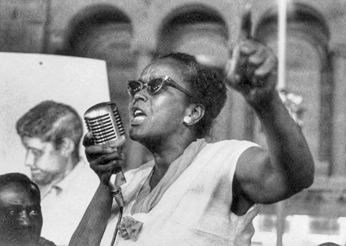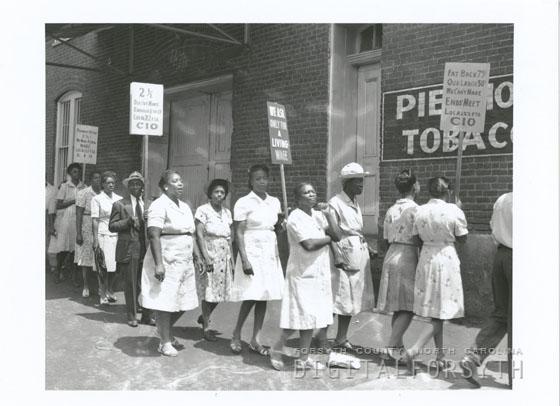The Civil Rights Movement on the National Stage and in North Carolina
Many African Americans emerged from World War II intent on rejecting second-class citizenship once and for all. The Civil Rights Movement took shape in the years that followed. The military was desegregated. Freedom rides, bus boycotts, and strikes challenged Jim Crow laws. In North Carolina, a Senate campaign turned ugly over the issue of race, and in Robeson County, the Lumbee challenged the Ku Klux Klan — and won. In this chapter we’ll examine the origins of the Civil Rights Movement and analyze the reasons for its early successes and failures.
Although the Civil Rights Movement is often associated with courageous figures like Martin Luther King, Jr., Rosa Parks and Malcolm X, many others, including a number of North Carolinians, made critical and lasting contributions to the movement. These contributions included efforts by both activists and newspaper editors. Louis Austin was an African American newspaper editor in Durham, North Carolina. He purchased the Carolina Times in the 1927 and used his editorship of the Durham paper to press for the rights of African Americans.
Ella Baker was also a prominent figure in the Civil Rights Movement, but has often been overlooked by historians because she worked largely behind the scenes. Baker grew up in Virginia and North Carolina and graduated as class valedictorian from Shaw University. She then became active in the Civil Rights Movement in the 1930s. In 1938 she began work for the National Association for the Advancement of Colored People (NAACP); investigating lynching of blacks in the South and helping push for federal anti-lynching laws. She became director of a number of branches. Ella Baker helped organize three key civil rights groups, including the Student Nonviolent Coordinating Committee (SNCC). The organization formed during her return to Shaw University in 1960 to help organize nonviolent resistance towards segregation.
North Carolina has also provided many examples beginning as early as the 1930s of direct action tactics Direct action tactics refer to civil protest tactics and strategies where non-violent methods are used by protestors to try to bring the opponent, often oppressive, into dialogue over an issue or unjust action. Sit-ins and boycotts are two well-known examples.. In 1932, African American ministers in Raleigh, North Carolina protested the dedication of the new War Memorial Auditorium because blacks would be forced to sit in a small area of the balcony. This technique developed and expanded, and the Congress on Racial Equality (C.O.R.E) grew in part from these early actions. In 1947, C.O.R.E. organized a test of a Supreme Court decision against segregation in interstate buses. To do this they sent African American men on Greyhound and Trailways buses. Riders were arrested in Durham, Chapel Hill and Asheville, North Carolina. Known as the "Journey of Reconciliation," these rides became the model for the more well-known Freedom Rides of 1961. Other examples of civil rights action in North Carolina included African American workers' business boycotts and the development of labor unionism.
Additional Resources:
Gershenhorn, Jerry. 2018. Louis Austin and The Carolina Times: A Life in the Long Black Freedom Struggle. Chapel Hill: The University of North Carolina Press.
Ella Baker Center for Human Rights. ”WHO WAS ELLA BAKER?.” Accessed July 23, 2018. https://ellabakercenter.org/who-was-ella-baker/.
Janken, Kenneth R. “The Civil Rights Movement:1919-1960s” Accessed July 23, 2018. http://nationalhumanitiescenter.org/tserve/freedom/1917beyond/essays/crm.htm

